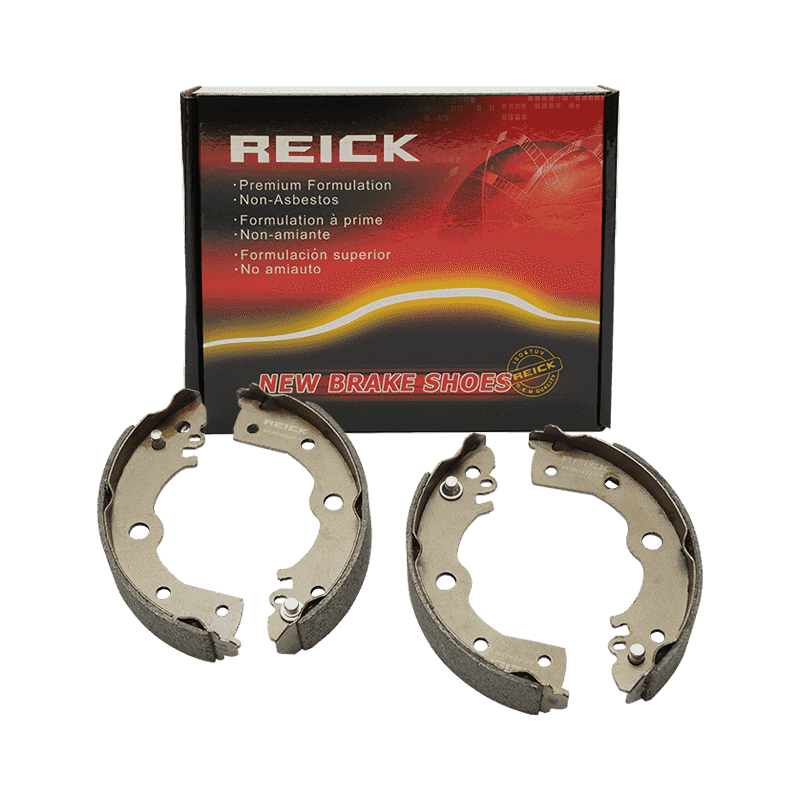 2025.07.18
2025.07.18
 Industry News
Industry News
When it comes to vehicle safety, brake shoes play a crucial role in ensuring smooth and reliable stopping power. Among the various types available, ceramic brake shoes have gained popularity due to their durability, performance, and reduced noise. In this comprehensive guide, we’ll explore what ceramic brake shoes are, their advantages, how they compare to other brake shoe materials, and key factors to consider before purchasing.
Ceramic brake shoes are made from a composite of ceramic fibers, bonding agents, and non-ferrous filler materials. Unlike traditional brake shoes, they contain no metal, which reduces wear on brake drums and minimizes noise. These brake shoes are known for their excellent heat dissipation, consistent performance, and long lifespan.
Ceramic brake shoes offer several benefits over other types, making them a preferred choice for many drivers:
To understand why ceramic brake shoes stand out, let’s compare them to the two other common types: organic and semi-metallic brake shoes.
| Feature | Ceramic Brake Shoes | Organic Brake Shoes | Semi-Metallic Brake Shoes |
| Material Composition | Ceramic fibers, bonding agents, non-ferrous fillers | Rubber, glass, Kevlar, and resins | Metal fibers (copper, steel) mixed with graphite |
| Noise Level | Very quiet | Moderate | Can be noisy |
| Brake Dust | Minimal | Moderate | High |
| Durability | Longest lifespan | Shortest lifespan | Moderate lifespan |
| Heat Resistance | Excellent | Poor | Good |
| Best For | Daily driving, performance vehicles | Light-duty vehicles, city driving | Towing, heavy-duty use |
One of the biggest selling points of ceramic brake shoes is their longevity. On average, they last between 50,000 to 70,000 miles, depending on driving habits and conditions. In comparison:
Factors that influence lifespan include:

Ceramic brake shoes are typically more expensive than organic or semi-metallic options. However, their extended lifespan, reduced dust, and quieter operation often justify the higher upfront cost. Here’s a cost comparison:
| Brake Shoe Type | Average Cost (Per Axle) | Value Consideration |
| Ceramic | $100 - $200 | Higher initial cost but lasts longer |
| Organic | $50 - $100 | Cheaper but requires frequent replacement |
| Semi-Metallic | $75 - $150 | Mid-range cost, good for heavy-duty use |
Regardless of material, brake shoes wear out over time. Watch for these warning signs:
Selecting the best brake shoes depends on several factors:
If you’re replacing brake shoes yourself, follow these steps:
Q: Do ceramic brake shoes work well in cold weather?
A: Yes, they perform consistently in both hot and cold conditions.
Q: Can I mix ceramic shoes with other brake materials?
A: It’s not recommended, as different materials may wear unevenly.
Q: Are ceramic brake shoes eco-friendly?
A: Yes, they produce less dust and contain no heavy metals.
Ceramic brake shoes offer a superior blend of durability, performance, and low maintenance. While they cost more initially, their extended lifespan and cleaner operation make them a smart investment for many drivers. Before purchasing, consider your driving habits, vehicle type, and budget to make the best choice.